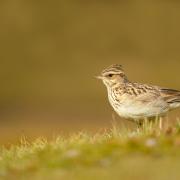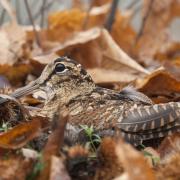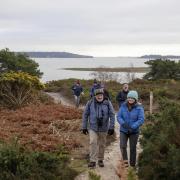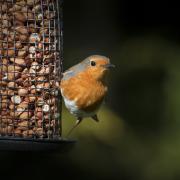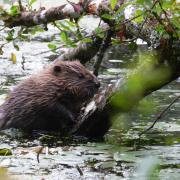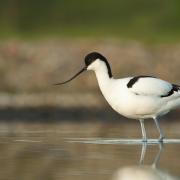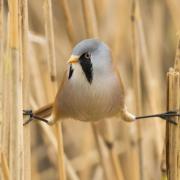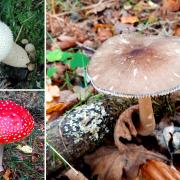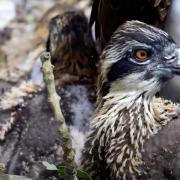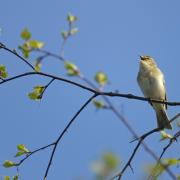The race is on, which feathered spring migrant will arrive in Dorset first? Paul Morton of Birds of Poole Harbour is scanning the skies for ospreys too
March heralds the arrival of our first spring migrants on the south coast and the race is on for the males of a whole host of species; they need to find and claim the best territories and prepare for their ‘better halves’ to arrive. For many this mega marathon begins in late January and early February as they head up through Africa, across the Mediterranean before making a bee-line for northern Europe. Their arrival here can vary greatly depending on weather conditions and wind directions in southern Europe. But with breeding and feeding on their minds, pure determination and lust sees this incredible journey for several species often completed by mid March.
Normally it’s a two-horse race between the pristine northern wheatear and the super zippy sand martin as to which will arrive first in Poole Harbour. With their pastel blue-grey caps and backs and black bandit masks male northern wheatears are a welcome sight on any early spring day. They can turn up anywhere from the beach and car parks at Baiter, along the cycle paths at Holes Bay and even up on Ballard Down.
The sand martin almost always heads straight for large bodies of fresh water such as the main Poole Park boating lake, Swineham Gravel Pits or Hatch Pond. Their hope is that it is warm enough for small insects to be active near the surface of the water so they can feed. Sand martins, a close relation to our swallow, arrive throughout March and can congregate in large numbers if the feeding is good, before they then move off to their breeding grounds.
Most spring passage waders begin to pass through Poole Harbour in April, however the little ringed plover puts the rest to shame by touching down on the pools and scrapes of Lytchett Fields and Swineham Floods by mid March. The obvious yellow ring around its eye and long pointed structure makes this delicate bird easy to identify, and quite often four or five will choose to feed in the same area, a site rarely seen at other times of the year.
Another March migrant that is bound to set pulses racing is the magnificent osprey which, you maybe surprised to discover, is an annual visitor to Poole Harbour. They pass through Dorset on their way to breeding grounds in Scotland. Middlebere and Arne are good places to watch the skies for this fish-eating bird of prey. If you’re very lucky you may see one grab a fish and feed before continuing its journey north. We’ve even seen ospreys casually passing over Poole town centre, so it’s well worth keeping an eye skywards on mild March days.
Many of our resident birds are changing in behavior and even colours this month. The drumming of both lesser and great spotted woodpeckers ricochet around newly emerged hazel catkins, and common garden birds begin to impress with their vocal repertoires. Meanwhile, in the reed beds the reed bunting transform from boring brown to brilliant black and white as a process known as feather abrasion reveals their dazzling summer finery.
Make sure you get out into the Dorset coast and countryside to witness this early rush of spring magic.
Find out more including a list of bird themed events and tours at birdsofpooleharbour.co.uk.








